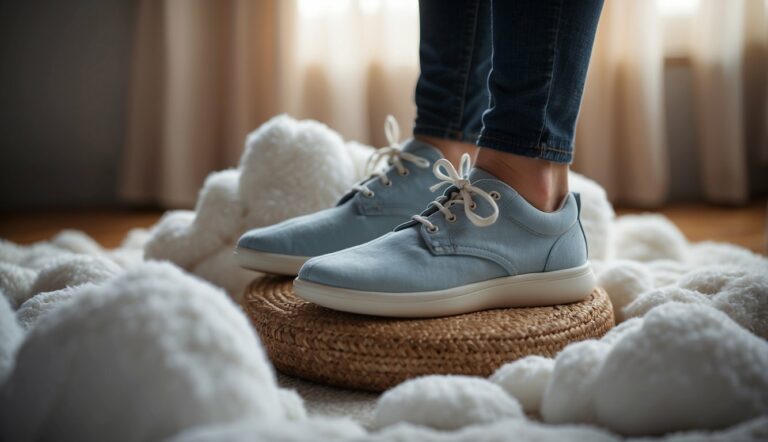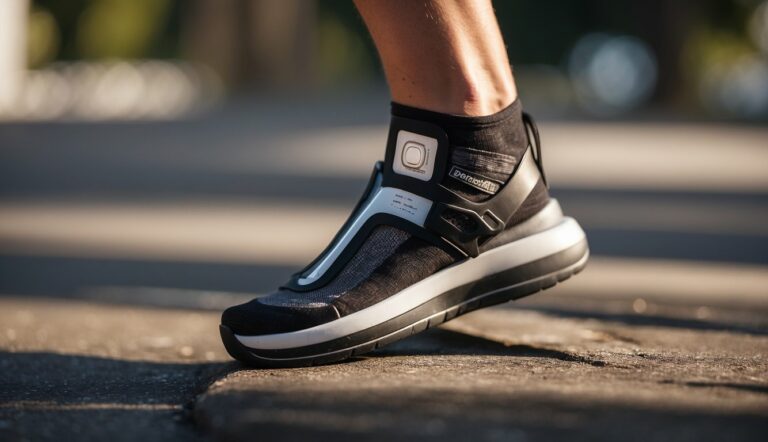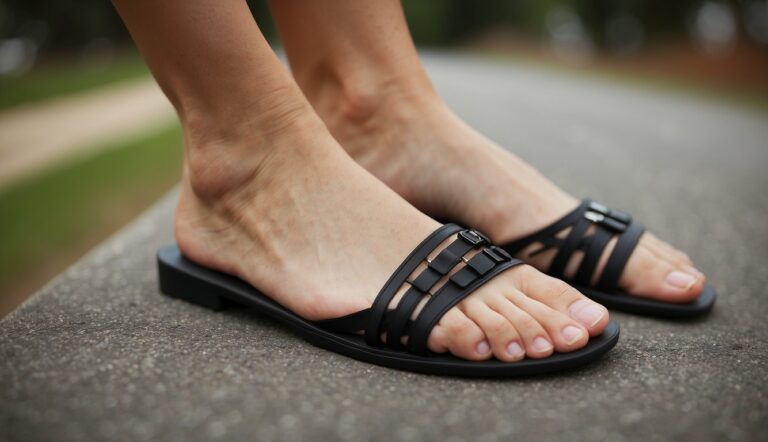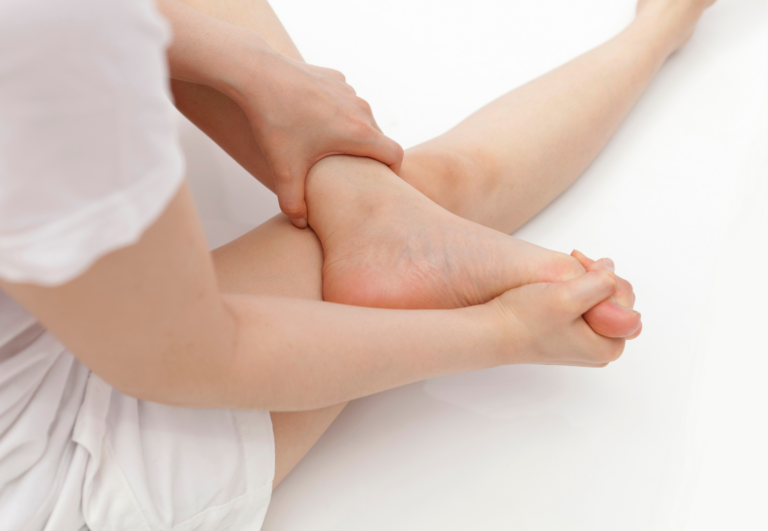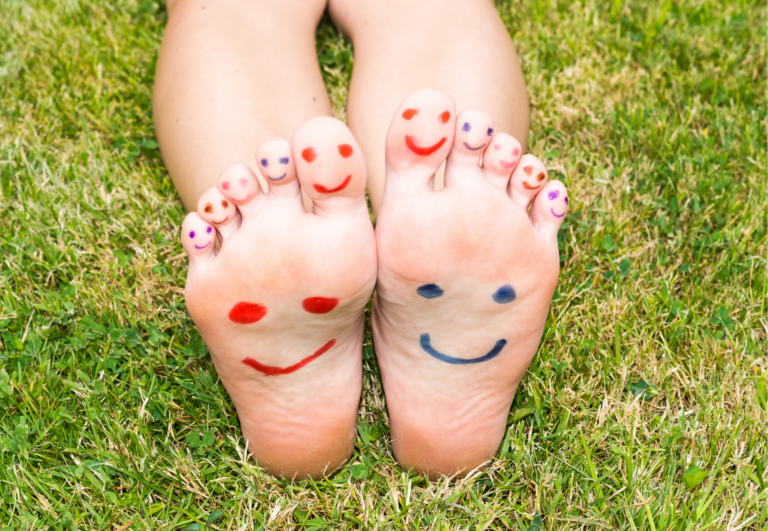How Toe Spacers Can Help With Toe Dexterity: Unlocking Flexibility and Strength
Toe spacers, often simple silicone or gel devices that separate the toes, have risen in popularity for fostering foot health. From my experience, they offer a non-invasive solution for enhancing toe dexterity and alignment. When toes are correctly aligned, it can lead to an improvement in balance, posture, and even overall foot strength.
My time using toe spacers has taught me that they can aid in counteracting the negative effects of tight, narrow shoes that often squash toes together. This is crucial, as cramped toes may not only cause comfort issues but can also inhibit normal foot function. Regular use of toe spacers can help maintain the natural toe spread, which is essential for optimal foot mechanics during movement.
While continuous toe crowding might contribute to conditions like bunions or hammertoes, incorporating toe spacers into your routine could potentially prevent or alleviate these issues. It is essential to introduce them gently into your regimen and consult a professional if you have pre-existing foot conditions. Through my observations, toe spacers serve as a proactive step in maintaining healthy foot structure and enhancing the flexibility and dexterity of toes.
How Toe Spacers Can Help With Toe Dexterity
Toe spacers can help improve toe dexterity by providing several benefits:
- Encouraging Natural Toe Alignment: Toe spacers can help realign the toes to their natural positions, which can be compromised from wearing tight, narrow, or high-heeled shoes. Proper alignment allows for better independent toe movement.
- Increasing Toe Strength: By separating the toes, toe spacers can encourage the use of muscles that might not be typically engaged. Strengthening these muscles can lead to increased control and dexterity.
- Enhancing Flexibility: Regular use of toe spacers can help increase the flexibility in the toe joints and muscles, allowing for a greater range of motion.
- Reducing Stiffness: Toe spacers can help alleviate stiffness in the toes by stretching the muscles and connective tissues, making it easier to move each toe independently.
- Improving Proprioception: With improved toe alignment and increased strength and flexibility, toe spacers can enhance the proprioceptive feedback from the toes to the brain, which is essential for coordinated movement.
- Stimulating Blood Flow: Better spacing between the toes can also improve circulation, which is important for tissue health and can aid in the recovery of movement after injuries or strain.
To maximize the benefits of toe spacers for dexterity, they can be used in conjunction with exercises designed to improve toe strength and mobility, such as toe curls, toe spreads, and toe lifts. It’s important to introduce toe spacers gradually to allow the feet to adjust and to avoid overstretching or causing discomfort.
As with any new practice, it’s wise to consult with a healthcare professional, especially if you have existing foot conditions or concerns, to ensure that toe spacers are appropriate for your specific needs and to receive guidance on how to use them effectively.

Toe Spacer Overview
Toe spacers are devices designed to improve toe alignment and offer relief from foot pain. They’re a straightforward tool with considerable benefits for toe dexterity and overall foot health.
Types of Toe Spacers
There are various toe spacers available, each crafted from different materials suited for specific needs.
- Silicone Toe Spacers: Highly flexible and comfortable, ideal for daily wear and sports activities.
- Foam Toe Spacers: Soft and cushioning, best for temporary relief and shorter durations.
- Gel or Silicon Toe Spacers: Durable and washable, these options maintain their shape over time and are good for both active and rest periods.
Benefits of Toe Alignment
Correct toe alignment is essential for balanced foot function. Properly spaced toes can result in:
- Reduced Friction: Leads to fewer blisters and calluses.
- Improved Foot Pain: Alleviates discomfort from conditions like bunions.
- Strengthened Foot Muscles: Enhanced dexterity can boost athletic performance.
Material and Usage
Materials matter when it comes to comfort and application. How you use toe spacers often depends on their material composition:
- Silicone and Gel: They offer a snug fit and can be worn with shoes, suitable for longer wear.
- Foam: Due to its soft nature, it’s typically recommended for brief use or while resting.
When selecting toe spacers, it’s important to consider both the material properties and intended usage to ensure they meet your specific needs. Their effectiveness in improving toe dexterity hinges on proper selection and application.
Biomechanical Implications
Toe spacers can enhance toe dexterity by positively impacting biomechanics associated with foot function. As an expert in the use and benefits of toe spacers, I’ve seen firsthand improvements in gait, posture, and overall stability.
Impact on Foot Musculature
Toe spacers can significantly affect the muscles in the feet. By separating the toes, they promote natural alignment, which in turn can lead to stronger and more flexible foot muscles. This is because the toes are allowed to spread and assume their natural position, engaging muscles that might remain dormant due to the restrictive toe boxes of modern footwear.
- Strengthening: Surpassing traditional footwear’s limitations, toe spacers encourage the strengthening of each toe’s individual musculature.
- Flexibility: Increasing the toes’ range of motion leads to greater mobility and functionality over time.
Gait and Posture Improvements
By aligning the toes naturally, toe spacers can alter the way pressure is distributed across the foot. This distribution is vital for a proper gait cycle, where equal and natural weight transference from heel to toe is essential. Spacers can subtly improve posture as well, given the interconnected nature of our body’s biomechanics.
- Weight Distribution: More balanced pressure points contribute to a smoother stride.
- Postural Alignment: As the foot’s position normalizes, this often cascels up to enhance overall body posture.
Influence on Balance and Stability
The use of toe spacers can improve balance and stability. With toes separated and adequately aligned, the foot can bear the body’s weight as intended, reducing the risk of falling and increasing overall steadiness during movement.
- Balance: Spread toes create a wider base, which improves proprioceptive feedback and reflexive adjustments.
- Stability: Better alignment supports the body’s natural balance mechanisms, yielding greater stability during dynamic activities.
In my experience, the integration of toe spacers into a routine not only supports toe dexterity but also contributes meaningfully to the biomechanical health of the feet.
Health and Medical Considerations
Toe spacers play a significant role in maintaining and improving foot health by addressing several common foot conditions and aiding in athletic recovery. Let’s explore how these simple devices could benefit your feet’s health and performance.
Prevention and Treatment of Foot Conditions
Toe spacers may prevent and help treat foot conditions such as bunions, hammertoes, and plantar fasciitis by realigning the toes to their natural position.
- Bunions: Regular use of toe spacers can alleviate pressure on the joint, potentially reducing the progression of the bunion deformity.
- Hammertoe: By separating and stretching the toes, spacers contribute to a more natural toe alignment, which might counteract the contracture of hammertoes.
- Plantar Fasciitis: Greater toe alignment can also relieve tension in the plantar fascia, helping to manage the pain from plantar fasciitis.
Role in Athletic Recovery
For athletes, toe spacers are an adjunct to recovery protocols to manage foot fatigue and injury.
- Recovery: They may foster restorative alignment after the stress of training and competition.
- Injury Prevention: Consistent use could prevent toes from crowding, which is pivotal in avoiding stress-related injuries.
Advice from Healthcare Professionals
While I’m experienced with toe spacers, I must emphasize consulting with a healthcare professional before starting their use.
- Tailored Treatment Plan: A podiatrist can develop a treatment plan that includes toe spacers as part of a comprehensive approach to foot health.
- Monitoring: Professional guidance ensures any potential issues are promptly addressed, optimizing the efficacy and safety of using toe spacers.
Footwear and Lifestyle Choices
In my experience with toe spacers, I’ve noticed that the right footwear and daily habits are crucial for toe dexterity and overall foot health.
Impact of Modern Footwear
Modern footwear, especially high heels and shoes with narrow toe boxes, can restrict natural foot movement. Fashion often takes precedence over function, leading to footwear that applies excessive foot pressure and cramps the toes. These shoes may cause deformities and diminish foot strength due to the lack of proper toe alignment and movement.
Transitioning to Minimalist Footwear
Switching to minimalist footwear can be a game-changer for toe dexterity. These shoes mimic barefoot walking, allowing for natural foot movement. They often feature wider toe boxes which reduce pressure and allow the toes to spread naturally. Over time, this can lead to stronger feet as they are not confined by restrictive shoes.
My Recommended Steps for Transitioning:
- Start by wearing minimalist shoes for short periods.
- Gradually increase usage as your feet adapt.
- Pay attention to any discomfort and adjust the pace of transition accordingly.
Daily Practices for Improved Foot Strength
Engaging in daily practices that promote foot strength can complement the benefits of toe spacers. Simple exercises, like picking up marbles with your toes or spreading them out as wide as you can and holding the position, can significantly enhance toe dexterity. Consistent practice can lead to improvement over time.
Daily Exercise Routine:
- Toe-gripping: Pick up items with your toes.
- Toe-spreading: Practice spreading your toes apart and holding.
Through mindful footwear choices and regular exercises, you can promote better toe dexterity and foot health. Remember, patience and consistency are key.
Purchasing and Using Toe Spacers
When considering toe spacers like Correct Toes or Yoga Toes, it’s essential to choose the right product and use them properly to improve toe dexterity. Here are some key points to ensure you purchase and use toe spacers effectively.
Selection Criteria
Type: Select toe spacers designed for your specific activities, such as yoga or running. Products like Correct Toes are versatile and can be worn with footwear or during barefoot activities.
Material: Quality matters. Look for toe spacers made of medical-grade silicone that are durable, comfortable, and less likely to cause irritation.
Size: Proper fit is crucial. Choose sizes that align with your shoe size for optimal comfort and effectiveness.
Purpose: If you’re using them as a splint for toe alignment or during a pedicure, ensure the design suits these activities.
Correct Usage and Maintenance
Instructions: Always follow the manufacturer’s guidelines for wearing duration and activities. Begin with short periods of usage and gradually increase as your toes adjust.
Cleaning: Regular upkeep is important. Wash toe spacers with mild soap and water after use to prevent buildup of bacteria.
Observation: Monitor your toes for any signs of discomfort or changes. While toe spacers like Correct Toes are designed to support toe health, if you experience any adverse effects, discontinue use and consult a healthcare professional.
Integration: Incorporate them into your daily routine to maximize benefits. Wearing them during regular activities can help improve toe dexterity over time.
